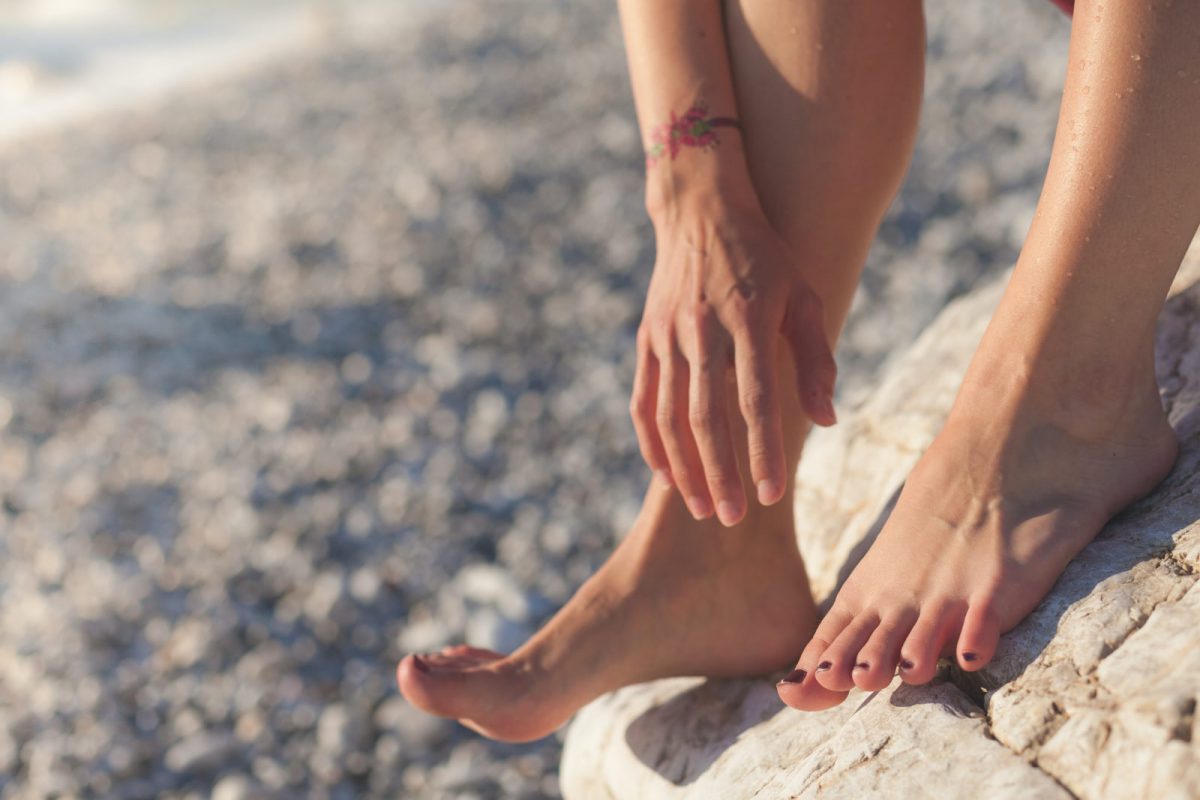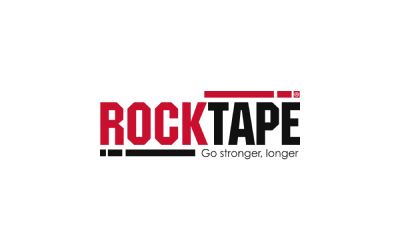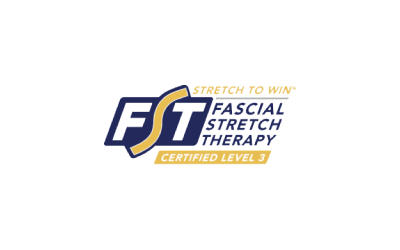Join the conversation.

Shoes can wreck our feet. And this is not news.
As far back as the ancient Greeks, philosophers were already describing how ill-fitting sandals caused diseases of the foot; Socrates himself was known to insist on walking barefoot.
In the 1800s European doctors and scientists published in earnest their research into the problems of footwear, from “Why the shoe pinches” to “The abuses of the foot” in 1862. In 1895 “A study of the weak foot”, observed how the foot and movement ability were linked [I] while in 1905 a Dr Philip Hoffman wrote a paper showing how traditional shoes deform feet [ii]. In the sixties a medical officer was stationed in St Helena where half the population wore shoes and the other didn’t, he concluded there was a direct relationship between the number of years of shoe-wearing and the angle of distortion of the big toe (leading to bunions) [iii].Today’s shoes don’t appear to have stopped people’s feet hurting– about 77% of Americans report suffering from painful, debilitating foot conditions [iv]. We are getting shoes very, very wrong – and the science on this goes right back to the start!
Today’s shoes don’t appear to have stopped people’s feet hurting – about 77% of Americans report suffering from painful, debilitating foot conditions [iv]. We are getting shoes very, very wrong – and the science on this goes right back to the start!
Today’s shoes don’t appear to have stopped people’s feet hurting. About 77% of Americans report suffering from painful, debilitating foot conditions.
Do you wear your shoes in or do they wear your feet in?
Researchers from a university in Johannesburg, South Africa compared modern humans from different populations to the feet of 2,000-year-old skeletons and concluded that, before shoes, people had healthier, stronger feet [v]. Another study compared the feet of South African and German children and found those who regularly went barefoot had healthier feet (higher overall arches and straighter big toes) than the (European) shoe-wearers.The regularly barefoot also presented with fewer foot characteristics like flat feet and deformed big toes and bunions, as well as having more flexible, pliable feet [vi] [vii].
Not only do are unshod feet seem to be healthier and stronger, but this in turn may have has a positive effect on the body and how it moves. A recent study found regularly barefoot kids scored better on balance and motor skills than their shod counterparts [viii]. Even our overall behavior and well-being might improve by removing our shoes.…
Researchers from a university in Johannesburg, South Africa compared modern humans from different populations to the feet of 2,000-year-old skeletons and concluded that, before shoes, people had healthier, stronger feet [v]. Another study compared the feet of South African and German children and found those who regularly went barefoot had healthier feet (higher overall arches and straighter big toes) than the (European) shoe-wearers.The regularly barefoot also presented with fewer foot characteristics like flat feet and deformed big toes and bunions, as well as having more flexible, pliable feet [vi] [vii].
Not only do are unshod feet seem to be healthier and stronger, but this in turn may have has a positive effect on the body and how it moves. A recent study found regularly barefoot kids scored better on balance and motor skills than their shod counterparts [viii]. Even our overall behavior and well-being might improve by removing our shoes. A decade-long study by the University of Bournemouth concluded keeping shoes OFF kids’ feet in the classroom helped them concentrate more, behave better and perform better academically [ix].
Even the advent of soft, cushioned sport’s shoes hasn’t stopped our feet suffering either. In the 70’s, running shoes went mainstream with the craze for jogging. But when athletic shoe companies found customers were complaining of Achilles tendon and calf injuries, they upped their game.
Mike Fritton, formerly a designer at Nike describes what happened next: “Bowerman (co-founder of Nike) decided to add a half-inch heel lift, based on what doctors were telling him. They were trying to accommodate people who had worn dress shoes all their life. The general public needed a product they could wear without discomfort.” But as the market boomed and the technology blossomed – oddly, the injuries that modern running shoes were meant to avoid didn’t disappear. In fact, they appeared to be blooming too.
Data suggests that up to 79% of recreational runners get some kind of lower limb injury [x] [xi] – which seems odd, given the amount of technology wrapping up our feet which is supposed to be helping us move better. A growing body of evidence even suggests that as the cushioning in a shoe increases, so does the proportion of runners who alter running mechanics [xii] in ways associated with injuries [xiii] [xiv] [xv].
This might be to do with how most runners in traditional running shoes hit the ground. Softer padding under the heel encourages a heel-strike action which heightens the impact force into the knees and hips [xvi]. Arch support, motion control and stability mechanisms in shoes inhibit natural pronation, part of our shock absorbing system, and weaken arches. Meanwhile, a barefoot running gait (just watch a child sprint off down the beach in bare feet for an idea of perfect running gait) means the foot hits the ground at the mid-to forefront [xvii].
The arch of the foot and Achilles tendon are designed to store and recoil 52% of this shock strain energy, further assisted by an aligned posture and higher cadence to help dissipate the rest of the shock [xviii]. Scientists from the National Running Centre at Harvard University showed foot muscle size and strength is restored in healthy, running adults when they reverted to walking in minimalist shoes over eight weeks [xix].
Two Spanish universities tested endurance runners to determine the effect of 12 weeks of barefoot running on foot strike patterns. Regardless of their speed, when applied progressively, there were significant changes in foot strike pattern with a tendency toward midfoot or forefoot strikes, both associated with being less likely to lead to lower limb injuries[xx].
And it´s not just fit, healthy adults who benefit from going barefoot. A recent study from the Movement Laboratory at the University of Liverpool concluded that Vivobarefoot footwear improves the stability and physical function of otherwise healthy, middle-aged and older people when compared to conventional shoes[xxi]. This is important as reducing falling as we get older is key to staying fit, healthy and independent. Research conducted by NICE in 2013 concluded falls cost the British National Health Service £2.3 billion a year[xxii].
We think the evidence shoes that being barefoot as much as possible.
For when this isn’t realistic, in minimalist shoes that interfere as little as possible in the foot´s natural movement, is better for us. It’s better for kids as they grow up, it’s better for older people as they slow down. And it´s better for the healthy, running-around types as well as those who are starting to suffer from reduced mobility.
Transitioning to barefoot is always best done slowly and steadily. Allow your feet time to wake up and reconnect, regenerate and rewild. Think in terms of months for all the dormant muscles that don’t get used when feet are cooped up in excessively supportive, cushioned shoes.
Give it time. And welcome to a world of bare, happy feet.
-
Daily activity in minimal footwear increases foot strength
Rory Curtis & Kristiaan D’Août (2019), Footwear Science, 11:sup1, S151, https://doi.org/10.1080/19424280.2019.1606299
Do You Want Your Feet Back?
Barefoot Cobblers by Catherine Willems
Minimal footwear improves stability and physical function in middle-aged and older people compared to conventional shoes Cudejko and D'Aout (2019), Liverpool https://doi.org/10.1016/j.clinbiomech.2019.11.005
The Urban Runner with an Evolutionary Legacy, Francis (2019) https://peterfrancis.blog/2019/07/18/the-urban-runner-with-an-evolutionary-legacy/
Smart Women, Stupid Shoes, and Cynical Employers: The Unlawfulness and Adverse Health Consequences of Sexually Discriminatory Workplace Footwear Requirements for Female Employees. Marc Linder https://ir.uiowa.edu/cgi/viewcontent.cgi?article=1007&context=law_pubs
77% (of North Americans) adults suffer foot problems. New Survey Reveals Majority of Americans Suffer from Foot Pain Source: American Podiatric Medical Association. https://www.prnewswire.com/news-releases/new-survey-reveals-majority-of-americans-suffer-from-foot-pain-259775741.html
Conclusions drawn from a comparative study of the feet of barefooted and shoe-wearing peoples Author: Phillip Hoffman. http://nohatka.cz/wp-content/uploads/2018/02/hoffman-1905-barefoot.pdf
Endurance running and the evolution of Homo. Dennis M. Bramble1 & Daniel E. Lieberman2
Walking in Minimalist Shoes Is Effective for Strengthening Foot Muscles. Authors: Ridge ST, Olsen MT, Bruening DA, Jurgensmeier K, Griffin D, Davis IS, Johnson AW. https://www.ncbi.nlm.nih.gov/m/pubmed/30113521/
Ticking Time Bomb: Childrens shoes cause health problems later in life for Adults. Source: Dr. Phil Maffetone. https://philmaffetone.com/kids-shoes/?fbclid=IwAR1prpLItWpxucx3JRepsZsXfEkpCMhoi7TqfE5NH4tjjMPuz5TwDi1onMI
Foot Strike Patterns Differ Between Children and Adolescents Growing up Barefoot vs. Shod. Authors: Hollander K, de Villiers JE, Venter R, Sehner S, Wegscheider K, Braumann KM, Zech A. https://www.ncbi.nlm.nih.gov/pubmed/29145687
Foot strength and stiffness are related to footwear use in a comparison of minimally- vs. conventionally-shod populations. Source: Nicholas B. Holowka, Ian J. Wallace & Daniel E. Lieberman. https://www.nature.com/articles/s41598-018-21916-7
How going Barefoot affects your Brain. Author: Dr Sam Oltman, ND. https://www.correcttoes.com/foot-help/how-going-barefoot-affects-your-brain/
Athletic footwear affects balance in men. Author: S Robbins, E Waked, G J Gouw, J McClaran
Motor Skills of Children and Adolescents Are Influenced by Growing up Barefoot or Shod. Astrid Zech, Ranel Venter, Johanna E de Villiers, Susanne Sehner, Karl Wegscheider, Karsten Hollander https://www.ncbi.nlm.nih.gov/pmc/articles/PMC5996942/
Barefoot is better for kids‚ new study shows. Author: Naledi Shange. https://www.timeslive.co.za/sunday-times/lifestyle/health-and-sex/2018-10-26-barefoot-is-better-for-kids-new-study-shows/
Children with no shoes on 'do better in classroom', major study finds. Author: Rachael Pells. https://www.independent.co.uk/news/education/education-news/schools-encouraged-to-adopt-no-shoes-policy-to-improve-pupils-learning-and-behaviour-a7044576.html. Source: http://rubble.heppell.net/places/shoeless/default.html
Studies show kids who grow up barefoot have better motor skills. Author: Karsten Hollander, Babette C. van der Zwaard, Johanna Elsabe de Villiers, Klaus-Michael Brauman, Ranel Venter, Astrid Zech. https://www.ncbi.nlm.nih.gov/pmc/articles/PMC5010736/
Effects of footwear on treadmill running biomechanics in preadolescent children. Author: Hollander K, Riebe D, Campe S, Brauman KM, Zech A. https://www.ncbi.nlm.nih.gov/pubmed/24890307
Being barefoot. Prevalence at home, in school and during sport: a cross-sectional survey of 714 New Zealand secondary school boys. Author: Francis P, Schofield G, Mackay L. https://www.ncbi.nlm.nih.gov/pubmed/30034544
The influence of footwear on the prevalence of flat foot. A survey of 2300 children. Author: Rao UB, Joseph B. https://www.ncbi.nlm.nih.gov/pubmed/1624509
Athletic footwear: unsafe due to perceptual illusions. Author: Steven E Robbins and Gerard J. Gouw. https://pdfs.semanticscholar.org/5689/dc03522ff19dabad98209e74b17ee9d8939c.pdf
Hazard of deceptive advertising of athletic footwear. Author: S Robbins, E Wake. https://www.ncbi.nlm.nih.gov/pmc/articles/PMC1332563/
The plantar sole is a 'dynamometric map' for human balance control. Author: Kavounoudias A, Roll R, Roll JP. https://www.ncbi.nlm.nih.gov/pubmed/9831459
A comparative biomechanical analysis of habitually unshod and shod runners based on a foot morphological difference. Author: Mei Q, Fernandez J, Fu W, Feng N, Gu Y. https://www.ncbi.nlm.nih.gov/pubmed/25964998
The effects of habitual footwear use: foot shape and function in native barefoot walkers. Author: K D’AoUt, T.C Pataky, D. De Clercq, P. Aerts. https://www.tandfonline.com/doi/abs/10.1080/19424280903386411
Is your prescription of distance running shoes evidence-based? Author: C E Richards P J Magin, R Callister. https://bjsm.bmj.com/content/43/3/159.short
The effect of three different levels of footwear stability on pain outcomes in women runners: a randomised control trial. Author: Michael B Ryan, Gordon A Valiant, Kymberly McDonald, Jack E Taunton. https://bjsm.bmj.com/content/45/9/715.short
Effects of a foot strengthening program on foot muscle morphology and running mechanics: A proof-of-concept, single-blind randomized controlled trial, Taddei, U.T., Matias, A.B., Ribeiro, F.I.A., Bus, S.A., Sacco, I.C.N., Physical Therapy in Sports (2020), doi: https://doi.org/10.1016/ j.ptsp.2020.01.007. https://doi.org/10.1016/j.ptsp.2020.01.007
Efficacy of a progressive resistance exercise program to increase toe flexor strength in older people, Clinical Biomechanics (2016) Mickle, Karen J., Caputi, Peter, Potter, Jan M., Steele, Julie R. doi:10.1016/j.clinbiomech.2016.10.005 https://www.clinbiomech.com/article/S0268-0033(16)30155-3/fulltext
Influence of Maximal Running Shoes on Biomechanics Before and After a 5K Run Christine D. Pollard https://www.ncbi.nlm.nih.gov/pmc/articles/PMC5992812/pdf/10.1177_2325967118775720.pdf
Increased vertical impact forces and altered running mechanics with softer midsole shoes. Baltich J, Maurer C, Nigg BM. PLoS One. 2015;10(4):e0125196. https://www.ncbi.nlm.nih.gov/pmc/articles/PMC4405580/pdf/pone.0125196.pdf
Reduction in Plantar Heel Pain and a Return to Sport After a Barefoot Running Intervention
in a Female Triathlete With Plantar Fasciitis. 2017 Francis, Oddy https://journals.humankinetics.com/view/journals/ijatt/22/5/article-p26.xml
The Truth About Arch Support - A Meta Analysis of 150 Studies. https://runrepeat.com/arch-support-study -
[i] Whitman R. A study of the weak foot. Journal of bone and Joint Surgery. 1896 https://www.ncbi.nlm.nih.gov/pmc/articles/PMC2835577/
[ii] Hoffman P. Conclusions drawn from a comparative study of the feet of barefooted and shoe-wearing peoples. Journal of bone and Joint Surgery.October,1905.https://journals.lww.com/jbjsjournal/Abstract/1905/03020/CONCLUSIONS_DRAWN_FROM_A_COMPARATIVE_STUDY_OF_THE.1.aspx
[iii] Shine IB. Incidence of Hallux Valgus in a partially shoe-wearing community. British Medical Journal. June 1965. https://www.ncbi.nlm.nih.gov/pmc/articles/PMC2167058/pdf/brmedj02400-0040.pdf
[iv] New survey reveals majority of Americans suffer from foot pain. https://www.prnewswire.com/news-releases/new-survey-reveals-majority-of-americans-suffer-from-foot-pain-259775741.html
[v] Zipfel B, Berger LR. Shod versus unshod: the emergence of forefoot pathology in modern humans? The Foot. December 2007. https://www.researchgate.net/publication/232251119_Shod_versus_unshod_The_emergence_of_forefoot_pathology_in_modern_humans
[vi] Hollander K, de Villiers JE, Sehner S, et al. Growing-up (habitually) barefoot influences the development of foot and arch morphology in children and adolescents. Sci Rep. 2017;7(1):8079. https://www.nature.com/articles/s41598-017-07868-4#ref-CR4
[vii] Hollander K, van der Zwaard B, de Villiers JE, et al. The effects of growing up habitually barefoot on foot mechanics and motor performance in children and adolescents. Journal of Foot and Ankle Research. https://www.ncbi.nlm.nih.gov/pmc/articles/PMC5010736/
[viii] Hollander K, van der Zwaard B, de Villiers JE, et al. The effects of growing up habitually barefoot on foot mechanics and motor performance in children and adolescents. Journal of Foot and Ankle Research. https://www.ncbi.nlm.nih.gov/pmc/articles/PMC5010736/
[ix] Heppel S. Environment can impact performance in learning. May 2016. https://www.bournemouth.ac.uk/news/2016-05-20/environment-can-impact-performance-learning
[x] Lun V, Meeuwisse W et al. Relation between running injury and static lower limb alignment in recreational runners. Br J Sports Med. October 2004. https://www.ncbi.nlm.nih.gov/pmc/articles/PMC1724945/
[xi] Hollander K, Riebe D, Campe S, Braumann KM, Zech A. Effects of footwear on treadmill running biomechanics in preadolescent children. Gait Posture. 2014;40(3):381-385. https://europepmc.org/article/med/24890307
[xii] Hollander K, Argubi-Wollesen A, Reer R, Zech A. Comparison of minimalist footwear strategies for simulating barefoot running: a randomized crossover study. PLoS One. 2015;10(5):e0125880. https://www.ncbi.nlm.nih.gov/pubmed/26011042
[xiii] Daoud AI, Geissler GJ, Wang F, Saretsky J, Daoud YA, Lieberman DE. Foot strike and injury rates in endurance runners: a retrospective study. Med Sci Sports Exerc. 2012;44(7):1325-1334. https://www.ncbi.nlm.nih.gov/pubmed/22217561
[xiv] Pohl MB, Hamill J, Davis IS. Biomechanical and anatomic factors associated with a history of plantar fasciitis in female runners. Clin J Sport Med. 2009;19(5):372-376. https://www.ncbi.nlm.nih.gov/pubmed/19741308
[xv] Ruder M, Jamison ST, Tenforde A, Mulloy F, Davis IS. Relationship of Foot Strike Pattern and Landing Impacts during a Marathon. Med Sci Sports Exerc. 2019;51(10):2073-2079. https://www.ncbi.nlm.nih.gov/pubmed/31525171
[xvi] Baltich J, Maurer C, Nigg BM (2015) Increased Vertical Impact Forces and Altered Running Mechanics with Softer Midsole Shoes. PLoS ONE 10(4): e0125196. doi:10.1371/journal. pone.0125196. https://www.ncbi.nlm.nih.gov/pmc/articles/PMC4405580/pdf/pone.0125196.pdf
[xvii] Davis IS, Rice HM, Wearing SC. Why forefoot striking in minimal shoes might positively change the course of running injuries. Journal of Sport and Health Science. June 2017. https://www.sciencedirect.com/science/article/pii/S2095254617300492
[xviii] Ker RF, McNeil R, et al. The spring in the arch of the human foot. Nature: Vol 325 8, Jan 1987 https://www.ncbi.nlm.nih.gov/pubmed/3808070
[xix] Ridge ST, Olsen MT, Bruening DA, et al. Wakling in Minimalist Shoes Is Effective for Strenthening Foot Muscles. Med Sci Sports Exerc. January, 2019. https://www.ncbi.nlm.nih.gov/pubmed/30113521
[xx] Latorre-Román PA, García-Pinillos F, Soto-Hermoso VM, Muñoz-Jiménez M. Effects of 12 weeks of barefoot running on foot strike patterns, inversión-eversion and foot rotation in long-distance runners. J Sport Health Sci. November 2019. https://www.ncbi.nlm.nih.gov/pubmed/31720071
[xxi] Cudejko T, Gardiner J, Akpan A, D´Août K. Minimal footwear improves stability and physical function in middle-aged and older people compared to conventional shoes. Clin. Biomech. Jan 2020. https://pubmed.ncbi.nlm.nih.gov/31739197/
[xxii] Falls in older people: assessing risk and prevention. June 2013. https://www.nice.org.uk/guidance/CG161/chapter/introduction




